1. Polar Bears: Swimming to Survive
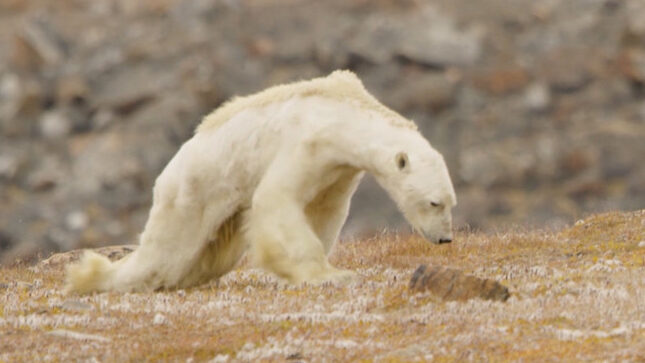
Polar bears, the iconic white giants of the Arctic, are facing an unprecedented crisis as climate change rapidly melts their icy habitat. According to the World Wildlife Fund (WWF), in the southern Beaufort Sea, the polar bear population plummeted by 40% between 2001 and 2010. This dramatic decline is directly linked to the loss of sea ice, which polar bears rely on as platforms for hunting seals, their primary prey. As the ice disappears earlier in spring and forms later in fall, bears are forced to swim longer distances in search of food, often leading to exhaustion and drowning. WWF scientists predict that if current trends continue, two-thirds of the world’s polar bears could disappear by 2050. In 2008, polar bears became the first species to be listed as threatened under the U.S. Endangered Species Act primarily due to climate change.
The WWF reports that with less sea ice available, bears are spending more time on land, leading to increased human-bear conflicts in coastal communities. This shift is also forcing polar bears to adapt their diets, sometimes resorting to eating seaweed or bird eggs – a far cry from their preferred diet of fat-rich seals. The nutritional stress caused by these dietary changes can affect the bears’ ability to reproduce and raise cubs successfully. The plight of polar bears serves as a stark reminder of the far-reaching consequences of climate change, not just for this species but for the entire Arctic ecosystem they inhabit.
2. Salmon: Cooking in Their Own Rivers

Climate change is turning America’s rivers into deadly hot tubs for salmon, pushing these iconic fish to the brink of extinction. The National Oceanic and Atmospheric Administration (NOAA) reports that in California’s Sacramento River, a shocking 95% of winter-run Chinook salmon eggs and newly hatched salmon were killed by warm waters in recent years. This staggering loss is equivalent to wiping out 95 out of every 100 babies in a nursery. NOAA scientists warn that the problem isn’t confined to California; across the Pacific Northwest, salmon are facing similar challenges. Rising water temperatures are not only directly lethal to salmon but also create ideal conditions for parasites and diseases that can decimate populations. In some rivers, NOAA notes that wildlife officials have resorted to trucking salmon upstream to cooler waters in a desperate attempt to save the species.
According to NOAA, the impact of climate change on salmon extends beyond rising temperatures. Changing precipitation patterns are altering river flows, disrupting the delicate timing of salmon migration and spawning. Earlier spring melts can wash away salmon eggs or leave rivers too low for adult salmon to reach their spawning grounds later in the year. NOAA researchers have observed that in Alaska, some salmon runs have shifted by up to two weeks earlier over the past 40 years due to warming temperatures. This mismatch in timing can have cascading effects throughout the ecosystem, as many other species rely on the annual salmon runs for food. The loss of salmon would be catastrophic not only for the species itself but for entire river ecosystems and the human communities that depend on them.
3. Moose: Too Hot to Handle
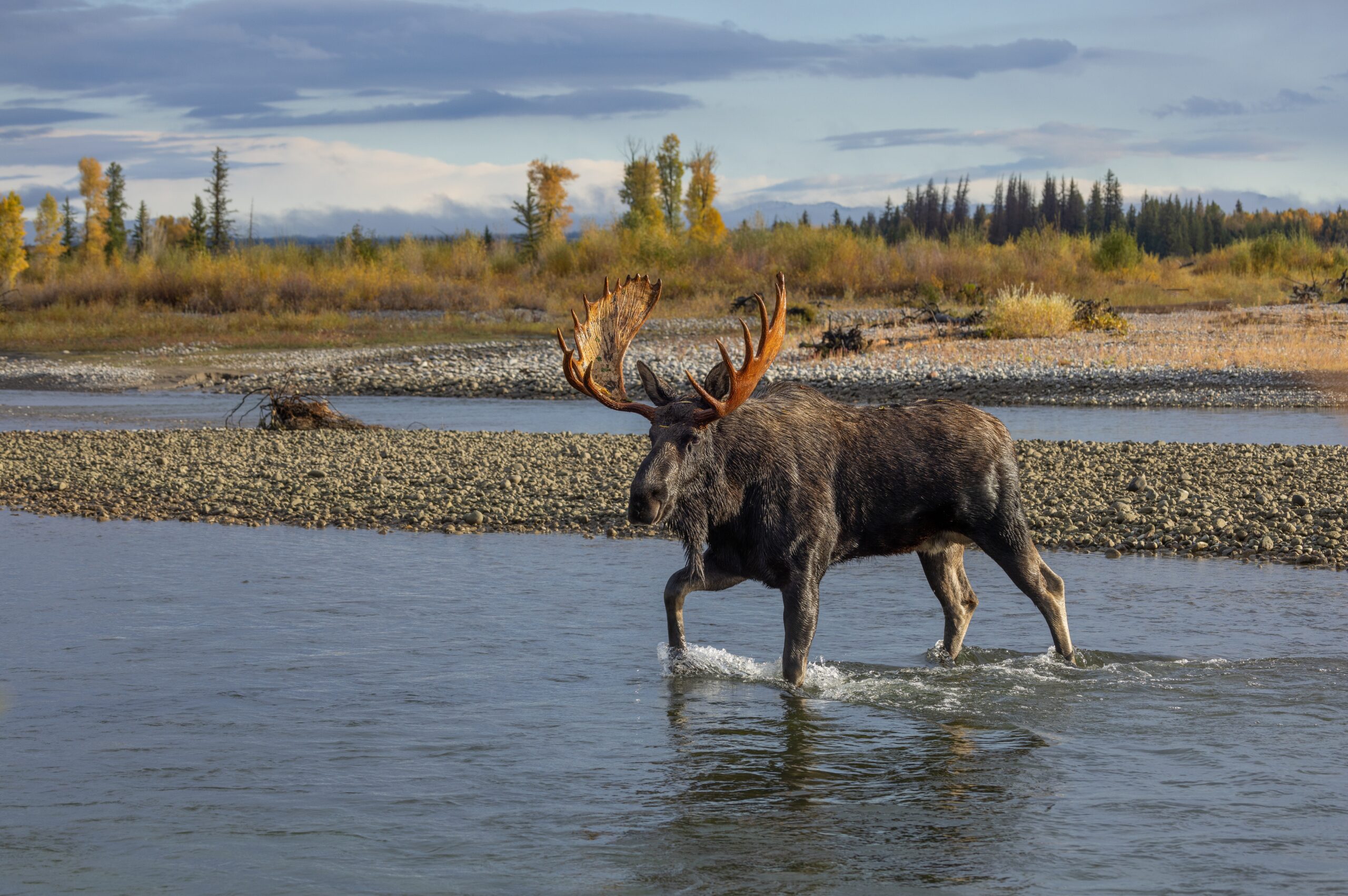
Moose, the largest members of the deer family, are struggling to cope with rising temperatures across North America. The Minnesota Department of Natural Resources reports that in their state, moose numbers have plummeted by 60% since 2006, a decline largely attributed to climate change. These massive animals, adapted for cold climates, suffer heat stress when temperatures rise above 57°F in summer or 23°F in winter. As warming trends continue, the Department notes that moose are being forced to spend more energy keeping cool, leaving less for essential activities like foraging and reproduction. In some areas, moose are shifting their ranges northward or to higher elevations in search of cooler habitats, but this migration isn’t always possible or successful.
The Minnesota Department of Natural Resources also highlights how the warming climate is indirectly impacting moose through changes in their ecosystem. As temperatures rise, white-tailed deer are expanding their range northward, bringing with them parasites like brain worm, which is fatal to moose but doesn’t affect deer. The Department’s research shows that warmer winters are also leading to population explosions of winter ticks. Some moose have been found with up to 70,000 ticks on their bodies, causing anemia and hair loss, and in severe cases, death. The combination of heat stress, parasites, and habitat changes is creating a perfect storm that threatens the long-term survival of moose in many parts of their current range.
4. Coral Reefs: Turning Ghost White
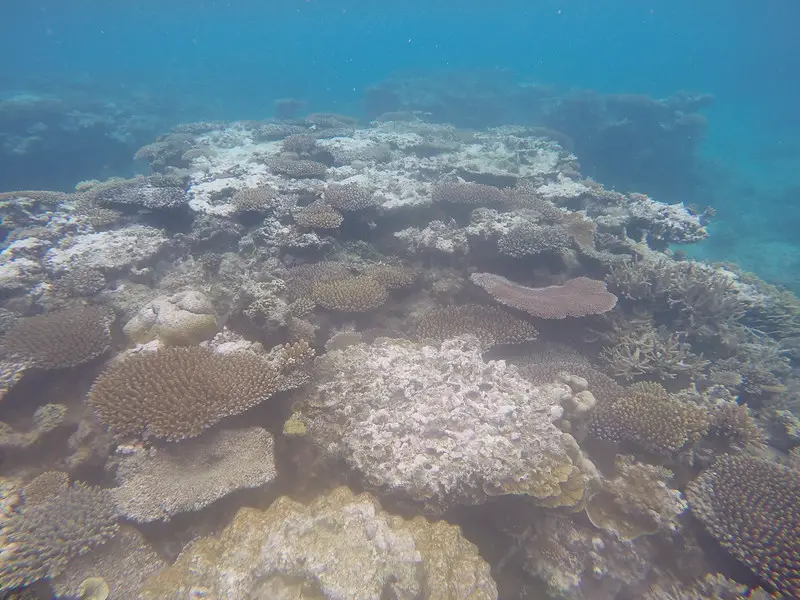
Coral reefs, often called the rainforests of the sea, are experiencing devastating bleaching events due to rising ocean temperatures. The National Oceanic and Atmospheric Administration (NOAA) Coral Reef Watch program reports that in 2014, a massive bleaching event affected 80% of the dominant corals in Kaneohe Bay, Oʻahu, highlighting the severity of this issue. NOAA scientists explain that when water temperatures become too warm, corals expel the colorful algae living in their tissues, causing them to turn white. This process, known as coral bleaching, leaves corals vulnerable to disease and death. If temperatures don’t return to normal quickly, the bleached corals can die, leading to the collapse of entire reef ecosystems.
NOAA Coral Reef Watch emphasizes that the impact of coral bleaching extends far beyond the corals themselves. Coral reefs provide habitat for about 25% of all marine species and are crucial for the health of our oceans. The loss of coral reefs affects fisheries, coastal protection, and the livelihoods of millions of people who depend on these ecosystems. NOAA scientists predict that if current trends continue, 90% of the world’s coral reefs could be lost by 2050. This loss would be catastrophic for marine biodiversity and would have significant economic impacts on coastal communities worldwide. The fate of coral reefs serves as a stark warning of the widespread ecological changes that climate change can trigger.
5. Pikas: Running Out of Mountain
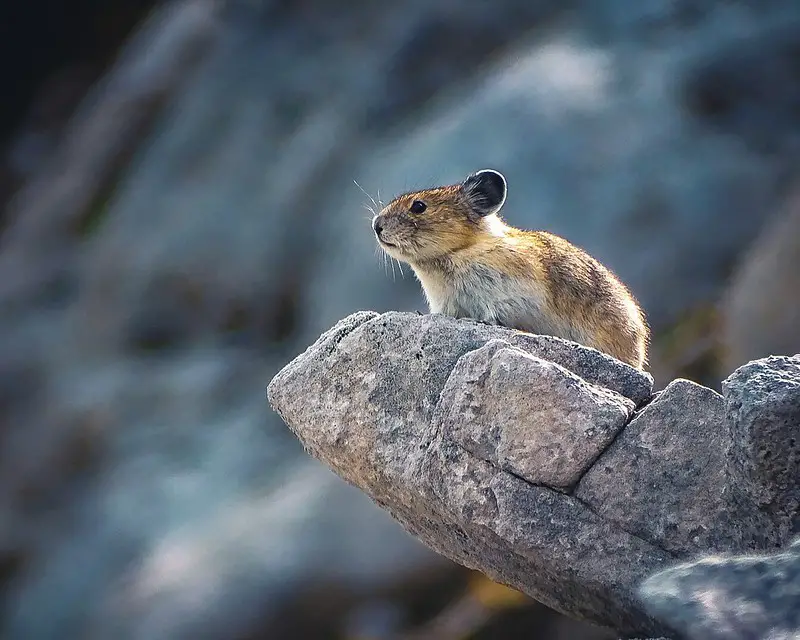
American pikas, small rabbit-relatives that live in high, rocky mountain areas, are facing an uphill battle against climate change. The U.S. Geological Survey (USGS) reports that these adorable creatures are extremely sensitive to high temperatures and can die if exposed to temperatures above 78°F for just a few hours. As temperatures warm, USGS researchers have observed pikas being forced to move to higher elevations to find suitable habitat. In places like Colorado’s Rocky Mountains, pikas are running out of mountain to climb, putting them at risk of local extinction. A USGS study in the Great Basin found that pika populations have disappeared from more than one-third of their previously occupied sites since the 1990s.
The USGS emphasizes that the plight of pikas highlights the vulnerability of mountain ecosystems to climate change. As temperatures rise, the cool, high-altitude habitats that pikas depend on are shrinking. This not only affects pikas but also other alpine species that may face similar challenges. USGS scientists note that pikas play important roles in their ecosystems, including dispersing seeds and serving as prey for larger animals. Their disappearance could have ripple effects throughout mountain food webs. The USGS predicts that if current warming trends continue, pikas could be extinct in much of their range by the end of the century, serving as a stark reminder of how quickly climate change can impact species with specific habitat requirements.
6. Caribou: A Triple Threat
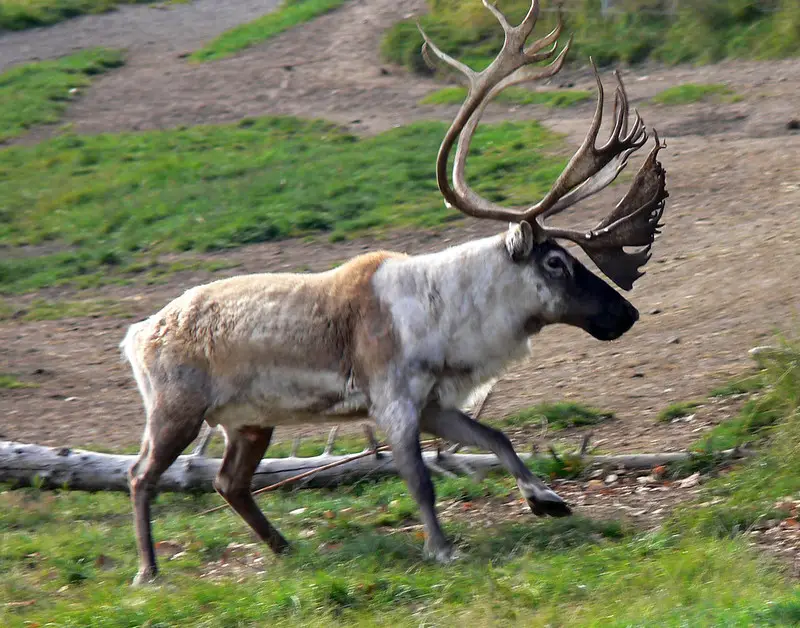
Caribou, iconic animals of the north, are facing multiple challenges due to climate change. The National Wildlife Federation reports that these majestic creatures are dealing with thinner snow cover, which makes it harder for them to dig for food in winter. Climate change is also altering vegetation patterns in their habitat, potentially reducing the availability of their preferred food sources. In some areas, the Federation notes that warmer temperatures are allowing shrubs to expand into tundra regions, changing the landscape that caribou have adapted to over thousands of years. Some caribou populations have declined by more than 50% in recent decades, with climate change playing a significant role in this decline.
According to the National Wildlife Federation, the changing climate is also affecting caribou migration patterns. In recent years, caribou have been observed starting their fall migration later due to warmer temperatures persisting longer into the year. This delay can put them at risk if they encounter harsh weather or difficult ice conditions during their journey. Additionally, the Federation’s research shows that warmer temperatures are leading to an increase in parasites that can weaken caribou populations. The challenges faced by caribou highlight how climate change can impact species through multiple, interacting factors. As a keystone species in northern ecosystems, the Federation warns that the decline of caribou could have far-reaching consequences for the entire food web and for indigenous communities that have relied on caribou for millennia.
7. Sea Turtles: Nests in Hot Water
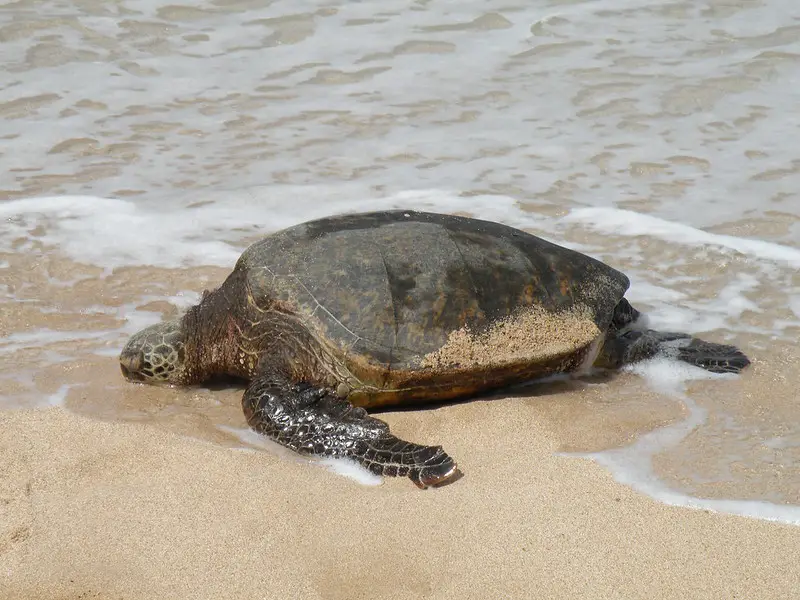
Sea turtles, ancient mariners that have navigated Earth’s oceans for over 100 million years, are facing new challenges due to climate change. The U.S. Fish and Wildlife Service reports that rising sea levels and increased storm intensity are eroding nesting beaches, threatening the very places where sea turtles lay their eggs. At Cape Romain National Wildlife Refuge in South Carolina, the Service notes that staff often have to rescue and relocate loggerhead sea turtle nests to prevent them from being washed away by rising tides. This intervention, while necessary, adds stress to the turtles and may not be sustainable in the long term as sea levels continue to rise. The Service warns that in some areas, up to 30% of nesting beaches could be lost with just a one-foot rise in sea level.
The U.S. Fish and Wildlife Service also highlights how climate change is affecting sea turtles in more subtle ways. The temperature of the sand where turtles nest determines the sex of the hatchlings, with warmer temperatures producing more females. As beaches warm due to climate change, the Service has observed some populations becoming increasingly female-biased, which could lead to reproductive problems in the future. In some nesting sites in Florida, over 90% of loggerhead turtle hatchlings are now female. Additionally, the Service reports that warmer ocean temperatures are altering the distribution of jellyfish, a primary food source for some sea turtle species, potentially forcing turtles to travel farther to find food. These multiple impacts demonstrate how climate change can affect species at various stages of their life cycle, posing complex challenges for conservation efforts.
8. Mangroves: The Tree Invaders
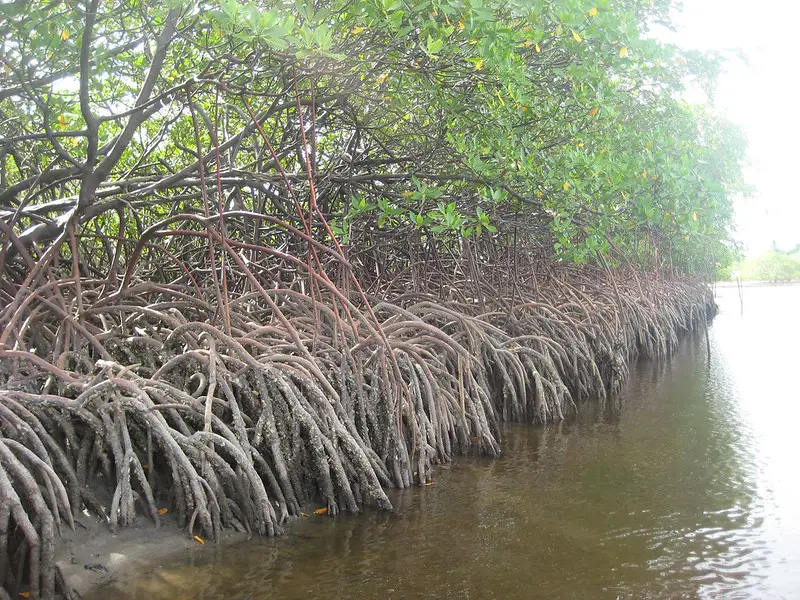
Mangroves, salt-tolerant trees that typically grow in tropical and subtropical coastal areas, are on the move due to climate change. The U.S. Geological Survey (USGS) reports that as temperatures warm, these trees are expanding their range northward along the Gulf Coast of the United States, encroaching on salt marshes that have long dominated these areas. Near Texas’s Aransas National Wildlife Refuge, USGS researchers have observed mangroves appearing in places that were previously too cold for them to survive. This northward expansion of mangroves is a clear indicator of how climate change is reshaping coastal ecosystems. The USGS notes that over the past 30 years, the area covered by mangroves in Texas has increased by 74%, a dramatic shift in coastal vegetation.
While the USGS acknowledges that mangroves provide important ecosystem services such as storm protection and carbon sequestration, their expansion is not without consequences. The dense growth of mangroves is changing the habitat structure in ways that can be detrimental to some species. For example, USGS studies show that the endangered whooping crane, which depends on open salt marshes for its winter habitat, is finding its preferred foraging grounds increasingly crowded by mangroves. This shift in vegetation could have significant impacts on the crane’s ability to find food and survive the winter. The USGS emphasizes that the mangrove expansion serves as a stark example of how climate change can create both winners and losers in ecosystems, altering habitats in ways that benefit some species while challenging others.
9. Wood Thrush: Missing Their Cue
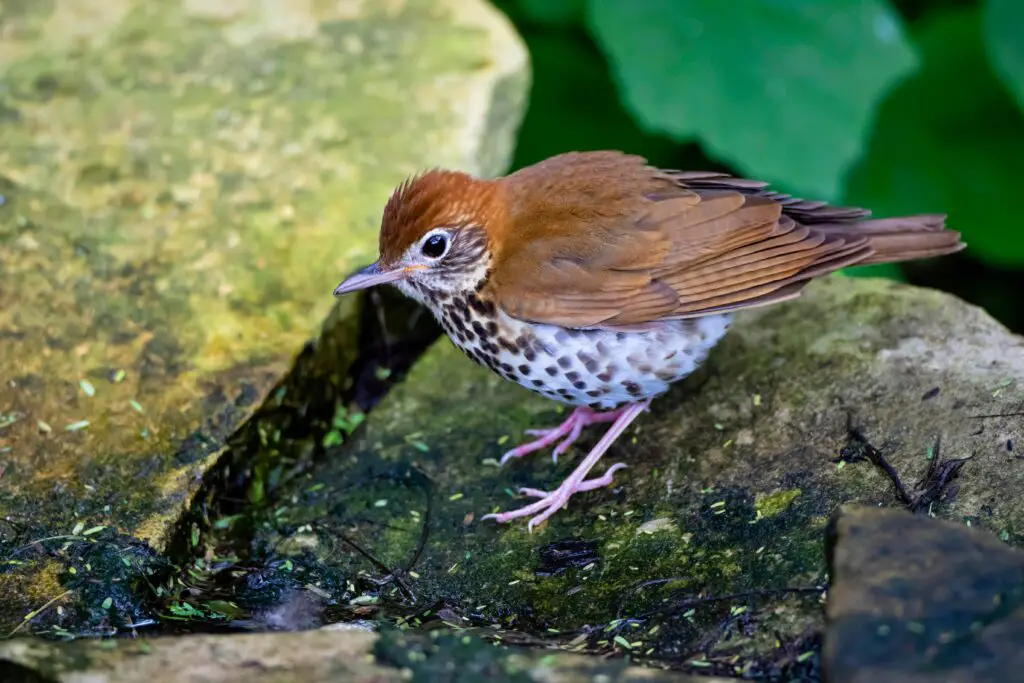
The wood thrush, a songbird renowned for its flute-like voice, is facing a climate-induced timing mismatch that threatens its survival. The National Audubon Society reports that these birds undertake a remarkable journey each year, flying thousands of miles between their breeding grounds in North American forests and their wintering areas in Central American jungles. However, Audubon scientists have observed that climate change is altering the timing of spring in North America, causing trees to leaf out and insects to emerge earlier. The wood thrushes, still in their tropical winter homes, are unaware of these changes and are arriving at their breeding grounds to find they’ve missed the peak insect abundance they rely on to feed their young.
According to the National Audubon Society, this phenological mismatch is having serious consequences for wood thrush populations. Audubon studies have shown that wood thrushes are now arriving at their breeding grounds about 5-7 days later than optimal relative to spring green-up. This delay can lead to reduced breeding success and fewer surviving offspring. Audubon’s climate models predict that by the end of the century, suitable habitat for wood thrushes in their current range, including Washington D.C. where it’s the official bird, may disappear entirely. The Society emphasizes that the plight of the wood thrush highlights how climate change can disrupt the delicate timing of natural cycles that species have evolved to depend on over thousands of years. As these cycles fall out of sync, Audubon warns it poses significant challenges for migratory species like the wood thrush.
10. Dungeness Crabs: Acid Test
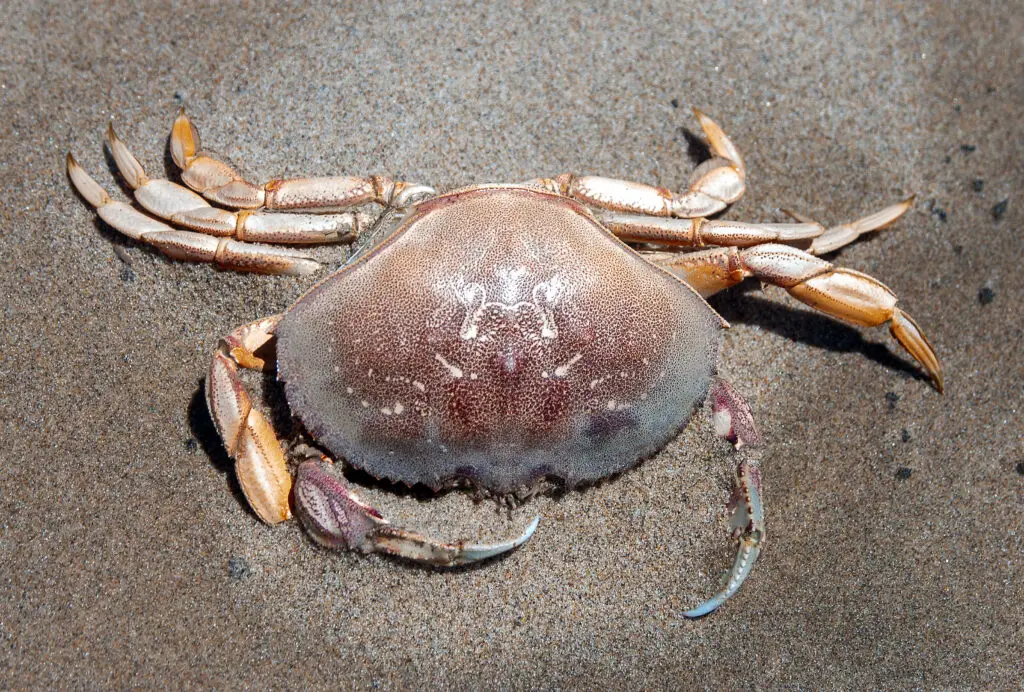
Dungeness crabs, a beloved seafood and vital commercial species along the West Coast, are facing an invisible threat from climate change: ocean acidification. The National Oceanic and Atmospheric Administration (NOAA) reports that as the ocean absorbs more carbon dioxide from the atmosphere, it’s becoming more acidic. This changing chemistry is literally eating away at the shells of larval Dungeness crabs before they even have a chance to grow up. A recent NOAA study found that the shells of larval Dungeness crabs in the increasingly acidic waters off the West Coast are dissolving, making them more vulnerable to predators and environmental stresses. In some areas, NOAA researchers observed up to 30% of larval crabs showed signs of damaged shells.
NOAA scientists emphasize that the impact of ocean acidification on Dungeness crabs extends beyond just shell damage. The energy that young crabs have to expend to repair their shells takes away from other crucial processes like growth and development. This can lead to smaller adult crabs and potentially reduced reproductive success. Given that the Dungeness crab fishery is the most valuable on the West Coast, worth over $200 million annually, NOAA warns that the implications of these findings are significant not just for the crabs, but for the entire coastal economy. The struggle of Dungeness crabs serves as a stark reminder of how ocean acidification, a direct result of climate change, can impact marine life in ways we’re only beginning to understand. NOAA stresses the urgent need for action to reduce carbon emissions and mitigate the impacts of climate change on our oceans.
11. Emperor Penguins: Emperor Penguins: Waddling on Thin Ice
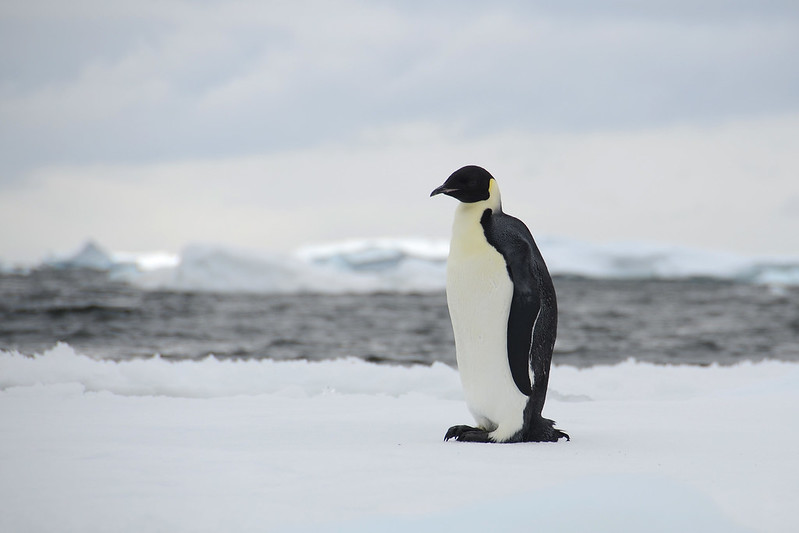
Emperor penguins, the iconic birds of Antarctica, are facing an unprecedented crisis due to climate change. According to a study published in Communications Earth & Environment in August 2023, over 90% of emperor penguin colonies could become nearly extinct by the end of this century if global temperatures continue to rise. The British Antarctic Survey found that an estimated 30% of the 62 known emperor penguin colonies in Antarctica had been affected by partial or total sea ice loss between 2018 and 2022. This loss of sea ice is devastating for emperor penguins, as they rely on it for breeding, raising chicks, and avoiding predators.
The situation has become even more dire in recent years. In 2023, record-low sea ice levels led to breeding failures in approximately one-fifth of Antarctica’s emperor penguin colonies, as reported by the British Antarctic Survey in April 2024. Of the five breeding sites studied in the Bellingshausen Sea, four experienced total breeding failure after sea ice break-up. Chicks are forced into the sea before their waterproof plumage has fully developed, resulting in fatalities due to hypothermia or drowning.
12. Monarch Butterflies: A Migration Under Threat
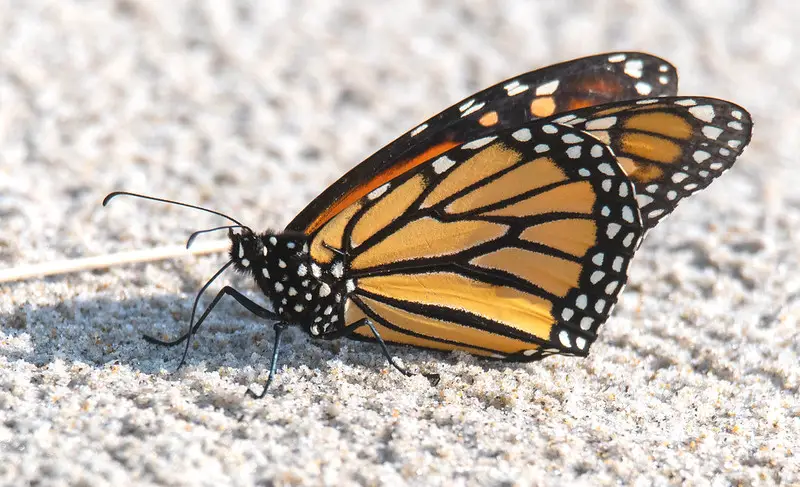
Monarch butterflies, known for their epic annual migration across North America, are facing severe challenges due to climate change. According to the World Wildlife Fund, the eastern monarch butterfly population experienced a 59% decline during the 2023-2024 winter season in their Mexican overwintering sites. This dramatic decrease is attributed to habitat loss and climate change, with the butterflies occupying only 2.2 acres of forest compared to 5.5 acres the previous year. Climate variations in their breeding areas in Canada and the United States have led to high temperatures and drought, reducing the abundance of milkweed, the only plant on which monarchs lay their eggs.
The impact of climate change on monarchs extends beyond habitat loss. The National Audubon Society reports that warmer temperatures are disrupting their migration patterns, with fall migrations from Canada delayed by up to six weeks in recent years. Extreme weather events, such as the 2002 storm that killed nearly 80% of the overwintering monarch population in Mexico, pose catastrophic risks. Additionally, climate change is affecting the growth of milkweed, their essential food source and breeding habitat. The combination of these factors has led to a decline of two-thirds in monarch populations since the 1990s in central Mexico, and by more than 95% since the 1980s in coastal California, highlighting the urgent need for conservation efforts to protect this iconic species.


